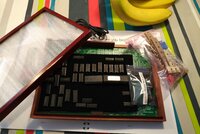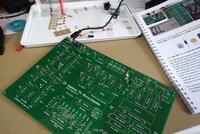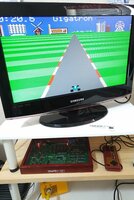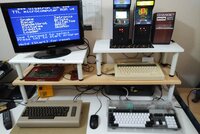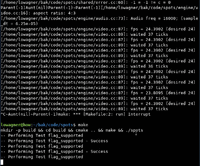PCXT
Very Active Member
- Joined
- Sep 14, 2016
- Messages
- 279
- Age
- 37
The cardboard wears in a form of fibers which accumulate on the outward parts of the "bearing", filling it. This works quite efficiently, only add the solution and tighten the mounting. After 6 or 7 attempts it looks like there is no need to tighten as it enters some kind of "steady state" of worn cardboard circulation.
The device does not exactly work by applying alcohol - it works by passing the ribbon through the alcohol+ink solution.
The device does not exactly work by applying alcohol - it works by passing the ribbon through the alcohol+ink solution.


